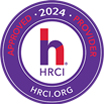
The use of this seal confirms that this activity has met HR Certification Institutes (HRCI) criteria for recertification credit pre-approval.
This activity has been approved for
1 HR
(General) recertification credit hours toward aPHR,
Performance coaching masquerades under many names. Some call it human performance technology (HPT); some call it human performance improvement (HPI); some call it human performance engineering (HPE); some call it human performance coaching (HPC); some drop the word "human" and just call it performance coaching (PC); some call it human performance enhancement (HPE); and, some call it human factors studies (HFS). There may be other names I may be missing here, but these keywords or key phrases capture much of the literature found on the web and in print about the topic. Much has been written about PC and related topics (see, for instance, Bakhshandeh, & Rothwell, 2022 in press; Gilbert, 2007; Mager, & Pipe, 1997; Pershing, 2006; Robinson, Robinson, & Phillips, 2015; Rothwell, 1999; Rothwell, 2015a; Rothwell, 2015b; Rothwell, Benscoter, Park, Woocheol, & Zabellero, 2014; Rothwell, & Dubois, 1998; Rothwell, King, & Hohne, 2018).
The premise of PC is simple. The same basic approach used by medical doctors to diagnose and treat illnesses can also be applied by consultants, human resources (HR) practitioners, and operating managers to diagnose and treat problems with human behavior and with human job performance. A similar approach is used by engineers to troubleshoot problems with machines or technology and offer solutions. It is an evidence-based approach to dealing with human problems (see Rousseau & Barends, 2011; Van der Togt & Rasmussen, 2017).
Ask yourself this question: how many ways can the human body go wrong, and how many ways can those problems with the human body be solved? Answering that question is the challenge faced by medical doctors. Then ask yourself this question: how many ways can human behavior and job performance go wrong, and how many ways can those problems be solved? Answering that question is the challenge faced by performance consultants.
Performance coaches apply an approach that is instantly recognizable and quite often expected by managers. PC is used by managers to solve a specific problem. They analyze the problem and issue recommendations to solve it based on their expertise in the area. Unfortunately, their recommendations are not always accepted by workers who have no ownership of solutions suggested by experts. This idea of calling in experts to diagnose and treat problems is called the medical model. It takes its name from the same approach used by medical doctors to treat illnesses.
Performance coaches apply a systematic approach to diagnosing and solving problems with human behavior and job performance. They identify the signs and symptoms of the problem; they collect data to determine the root causes of the problem; they brainstorm ways to solve the problems by addressing the underlying root causes; they discover the most efficient and effective ways to solve the problems; they seek to address any negative side effects caused by the solutions they identify; and, they manage and evaluate the implementation of the solutions. Often PCs draw on the vast research evidence that exists on how to improve human behavior and human job performance in work settings. Unfortunately, that research evidence is not always used in solving the human problems they face in organizations, and systematic ways of examining problematic human behavior are rarely taught in undergraduate and graduate courses on business management, government management, or even human resource management.
Consider a simple case study example of performance coaching in action.
The XYZ company is facing a problem with excessive turnover. In late 2021 the U.S. turnover rate for all organizations stands at 21 percent on average across all industries and locations. But XYZ company has a 70 percent turnover rate across all job categories and locations. The VP of Human Resources Maggie Smith calls in performance coach William Rosell, an expert in HR with 25 years of experience and a Ph.D. in HR, to "fix the problem" (her words). When Rosell asks Smith what is wrong, she says "we have a turnover problem." Rosell explains that Smith is conflating symptoms with root causes - a common point of confusion - and that turnover is a symptom of some underlying root cause; rather, turnover results from causes yet to be determined. Conceding the point, Smith asks Rosell for coaching to address the issue.
In many cases, managers have occasion to use performance coaching when helping workers plan their future performance targets during performance planning and also reviewing and troubleshooting performance problems with workers reporting to those managers. It is thus essential as part of a comprehensive performance management system.
What are the most common problems that workers face in their jobs? Typical examples include:
Common behavioral problems:
What is needed is a good approach for supervisors, managers, and executives to address these problems. That good approach is performance coaching. Hear about it - and how to use it - in this practical, dynamic webinar.